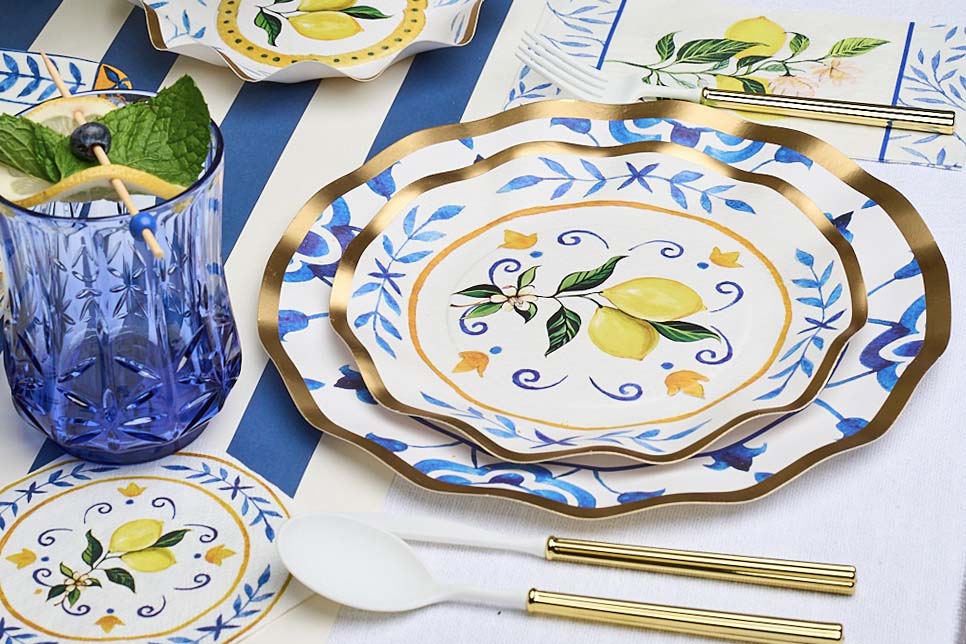The Origin, Evolution & History of the Charcuterie Board
There’s no better way to appreciate something than to learn about its history. And when it comes to something as universal as the art of charcuterie, we want to learn everything we can.
Read on to discover the origins of charcuterie, how it’s evolved over the years, and how you can create your own charcuterie board.
The History of Charcuterie
Charcuterie comes from the French terms chair, which means flesh, and cuit, which means cooked. But when we say charcuterie, we’re really referring to cured meats. A traditional charcuterie is a place where the cured meats are sold—kind of like a delicatessen.
Preserving meat is an old tradition that stretches back thousands of years. In the days before refrigeration, the simple techniques of salting and drying meat were enough to ensure their preservation for months. This is because salting meat quickly gets the moisture out, which makes it an inhospitable environment for bacteria.
While these simple techniques are incredibly old, it was in 15th century France that more sophisticated curing techniques began to develop. Experimenting with different curing solutions, drying times, and cuts of meat, the French developed a variety of delicious cured meats that are part and parcel of the art of charcuterie.
Traditionally, cured meats were made out of pork. However, these days we have offerings like beef salami, turkey bacon, and duck prosciutto. Then, of course, there are products like salt cod and beef jerky that might not make it on your charcuterie board but are still great examples of cured meat.
How Countries Around the World Do Charcuterie
Now that we know a little about charcuterie board history, let’s take a look at how it evolved in different parts of the world.
Although virtually every nation on earth has its own version of charcuterie, there are some cured meats that are world-renowned. Here is a brief survey of how different countries do charcuterie.
France
Not only is France the birthplace of charcuterie, but its charcuterie remains some of the best in the world. As with all French cooking, high-quality ingredients are key, which is why French charcuterie is little more than the meat itself with a few spices. Here is some French charcuterie you may be familiar with.
- Jambon: Jambon is a type of wet-cured ham that’s seasoned with nothing except regional salt. For this reason, the meat has to be of the highest quality. Although varieties of this ham vary slightly with the region, they all make up one of France’s most popular types of charcuterie.
- Saucisson: This is a dry-cured ham that’s dark in color and has a lot of fatty marbling. The seasonings used vary according to region. Some varieties of saucisson are made with only salt while others integrate cinnamon, allspice, and clove.
- Boudin: This is a type of sausage that’s made of ground meat and various spices, and then boiled in its natural casings. The result is a soft and succulent sausage that reminds us of a savory pudding.
- Pâté: This is another type of sausage with high-fat content. It’s usually made of coarsely ground meat with a variety of spices, herbs, and even vegetables added to it. The result is a rich charcuterie that is best for spreading on toasted slices of bread.
- Rillette: Rillette is made from meat that’s been simmered in its own fat and shredded into small pieces—sort of like confit. It tends to be incredibly rich in flavor, soft in texture, and perfect for spreading on sliced French baguette.
Italy
While charcuterie is the proper French word for cured meats, Italians refer to their cured meat as salumi. Much like France, it’s hard to define what exactly Italian salumi is—since it differs so much based on region. That said, there are definitely some salumi classics that you’ve doubtless heard of. Here are a few of them.
- Salami: You’d be surprised to learn that there isn’t one type of salami, but almost 600! These cured meats are finely ground with various spices and additional fat, and then dry-cured. This results in a hard texture and incredibly complex flavor.
- Mortadella: Mortadella is a type of ham with a pale pink appearance and—thanks to the finely-ground meat used to make it—a creamy, buttery texture. It’s made with warm spices such as coriander and usually has extra fat (and sometimes, even pistachios) added to it.
- Prosciutto: Although prosciutto technically refers to various types of hams, the version we’re most familiar with is the thinly-sliced, dry-aged, and fatty cured pork. It has an incredibly complex flavor due to the dry-curing process that’s used to make it, which makes it perfect for pairing with sliced melon.
- Pancetta: Similar to bacon, pancetta is made out of pork belly that’s been cured with salt (and not much else). If sliced thinly, it tastes delicious on its own. However, thick slices of pancetta are the perfect addition to a cooked dish.
- Bresaola: Unlike most cured meats that are made of ham, bresaola is air-dried beef that is aged for at least two months. It’s a lean cut of meat that turns a dark red color after it’s been aged. It’s relatively lean and has a sweet, musky aroma.
Spain
Spain is a country renowned for its pork products. Thanks to Iberian pigs, the country produces some of the world’s best (and most expensive) ham. Here are some of the nation’s best offerings:
- Jamón Iberico: This ham is made from rare black Iberian pigs who—all throughout their lives—roam free pastures and feed on acorns. This gives the ham a nutty flavor and incredibly high-fat content. This ham is perhaps the most revered in the world.
- Jamón Serrano: Although this type of jam is often compared to jamón Iberico, it’s actually made from a different breed of pigs, which makes it drastically different. Nonetheless, it’s a delicious type of fatty ham that’s thinly sliced and dry-cured—reminiscent of prosciutto.
- Chorizo: One of the most well-known types of sausage, Spain put chorizo on the map. While there’s no consistent definition for how this type of sausage is made, it’s generally a mix of ground pork and a generous portion of paprika—this is how this sausage gets its signature red color. There are many different additions to chorizo, but these usually vary by region.
- Morcilla: Spain’s blood sausage is made with a starchy filler such as rice, which gives it the consistency of pudding. It’s generally seasoned with garlic, onion, and paprika.
Germany
If there’s something Germany is known for, it’s beer and, of course, sausage (a classic combination!). The nation produces the most varieties of sausage, with over 1,000 varieties to call its own. The sausage you will find in Germany varies according to how it’s produced, the type of meat that’s used, the fillers and spices added to it, and the region that it hails from.
China
Unlike traditional salt-curing techniques, curing meat in China is tied to the seasons. The salting process takes place in the winter and in the following warm months, the meat is fermented and dried. Unlike France and Italy that leave meat curing to the professionals, in China it’s completely customary for anyone to try their hand at curing meat.
Tips for Making Your Own Charcuterie Board
Now that we know how different countries do charcuterie, let’s take a look at how you can craft your own charcuterie board.
- Keep It Regional: Since each region has its own ingredients, spices, and preparation techniques, sticking to one region will help to make sure that your charcuterie board ingredients match each other perfectly.
- Offer 3-5 Types of Meat: While we can technically eat piles of prosciutto, it’s a good idea to have at least three varieties of cold cuts. Try not to serve too many types of meat as that can also get overwhelming.
- Vary the Textures: A good rule of thumb is to have few dry-aged choices (since these tend to be the most popular), one option that’s wet-cured (such as the Italian mortadella), and one type of sausage (cut into bite-sized pieces).
- Balance It With Something Acidic: It’s no secret that cold cuts are fatty. Bring some balance to the decadence with an acidic ingredient such as brined olives, cornichons, or pickled peppers.
- Add Something Sweet: To enhance the flavors of salty cold cuts, we recommend serving your charcuterie board with some fresh fruit and sweet jams.
Don’t Forget the Wine
Last but not least, try to include a wine pairing with your charcuterie board. Make sure that the wine you serve is on the acidic side to cut through the fattiness of the cold cuts.
While both red and white wines can be paired perfectly with a charcuterie board, we recommend sticking to regional varieties. So, if your charcuterie board consists of French cold cuts, then a bottle of light-bodied French wine will be your best bet.
The Art of Charcuterie
Although it was born out of necessity, charcuterie has evolved to become true art. We hope that when assembling your next charcuterie board, you appreciate just a little bit more everything that goes into it.
Our Sources:
How Cured Meats Protect Us From Food Poisoning | BBC Future
Food Science: How Meat Is Cured | Kitchn
Why Spanish Iberian Ham Is the World's Most Expensive Cured Meat | Insider











